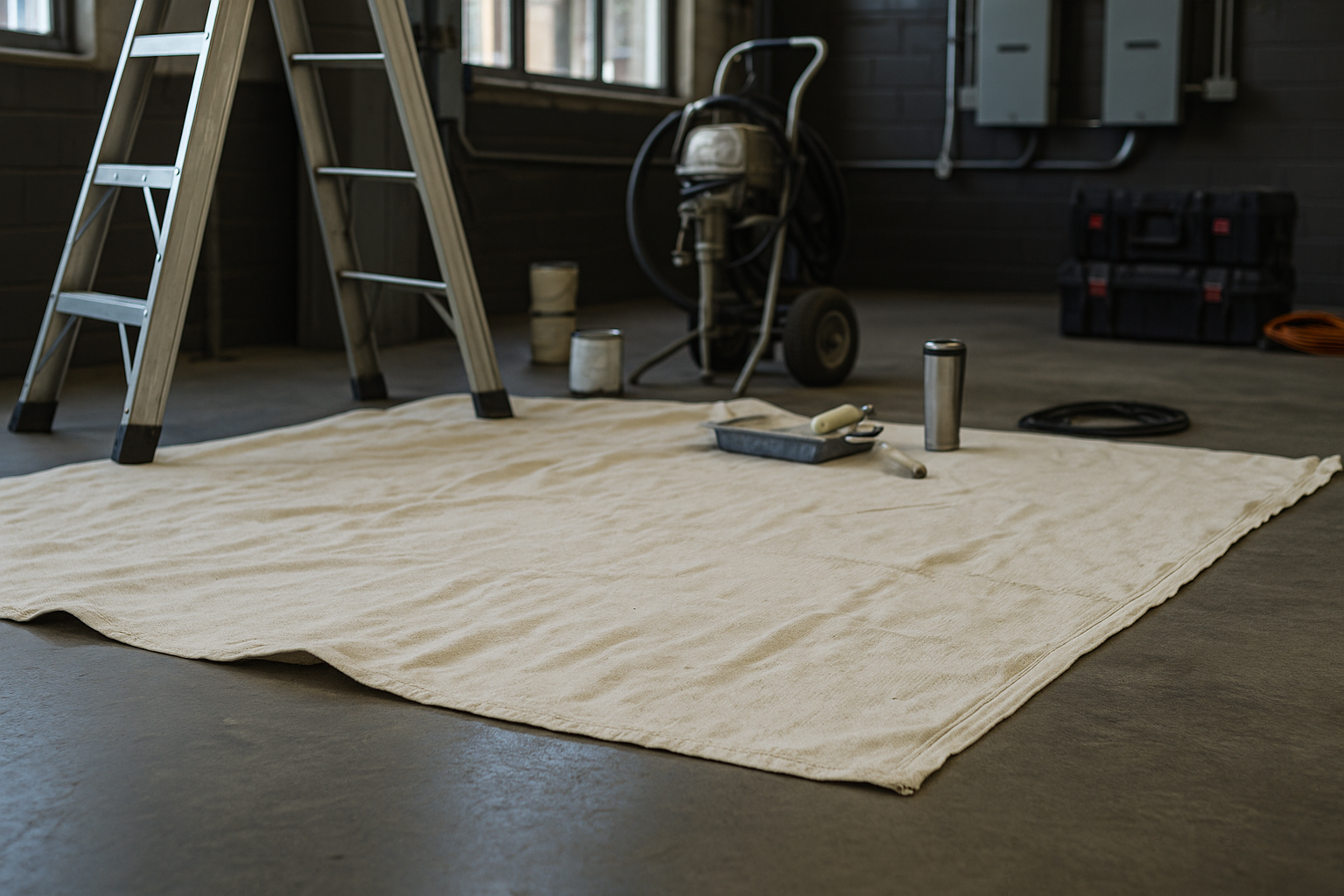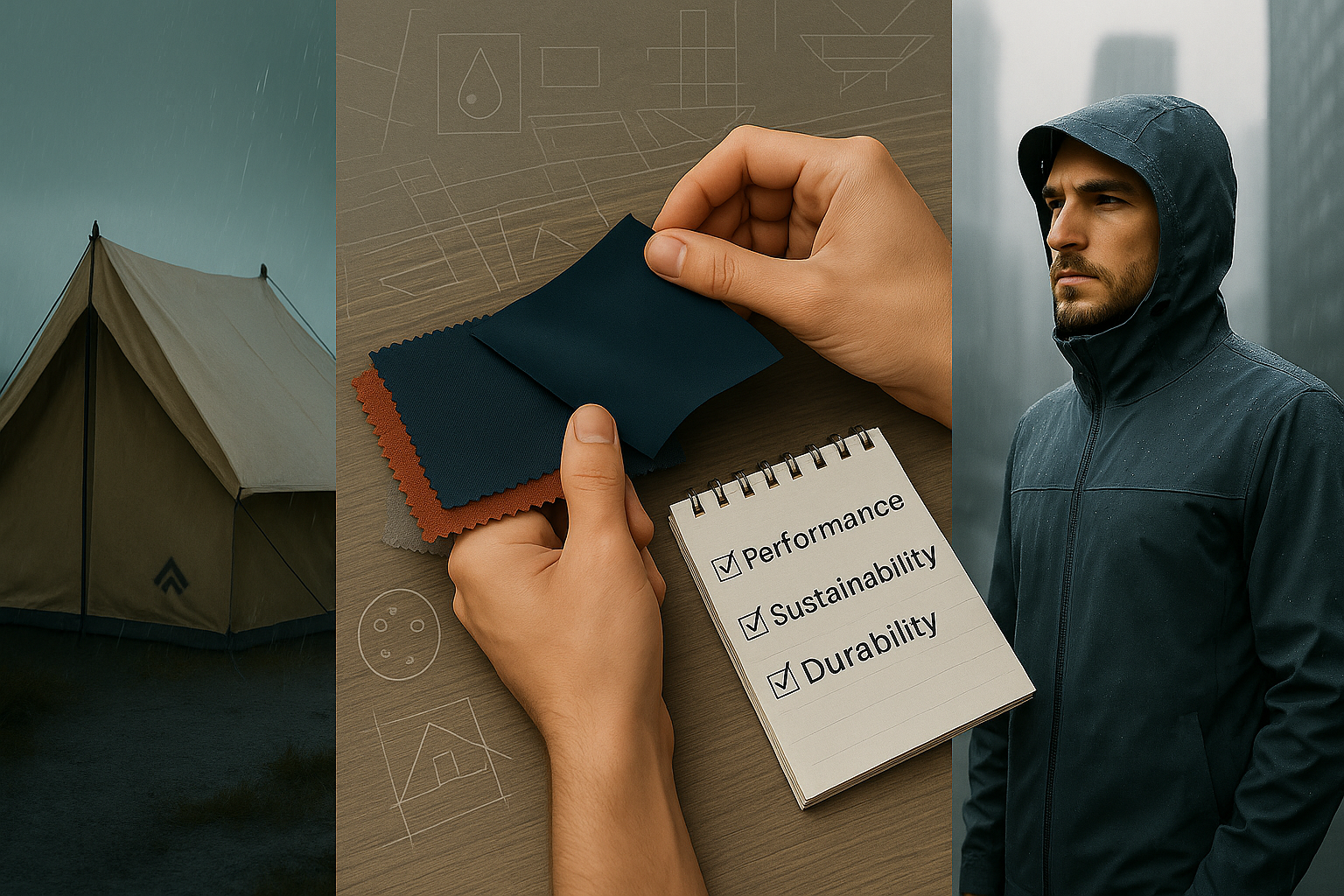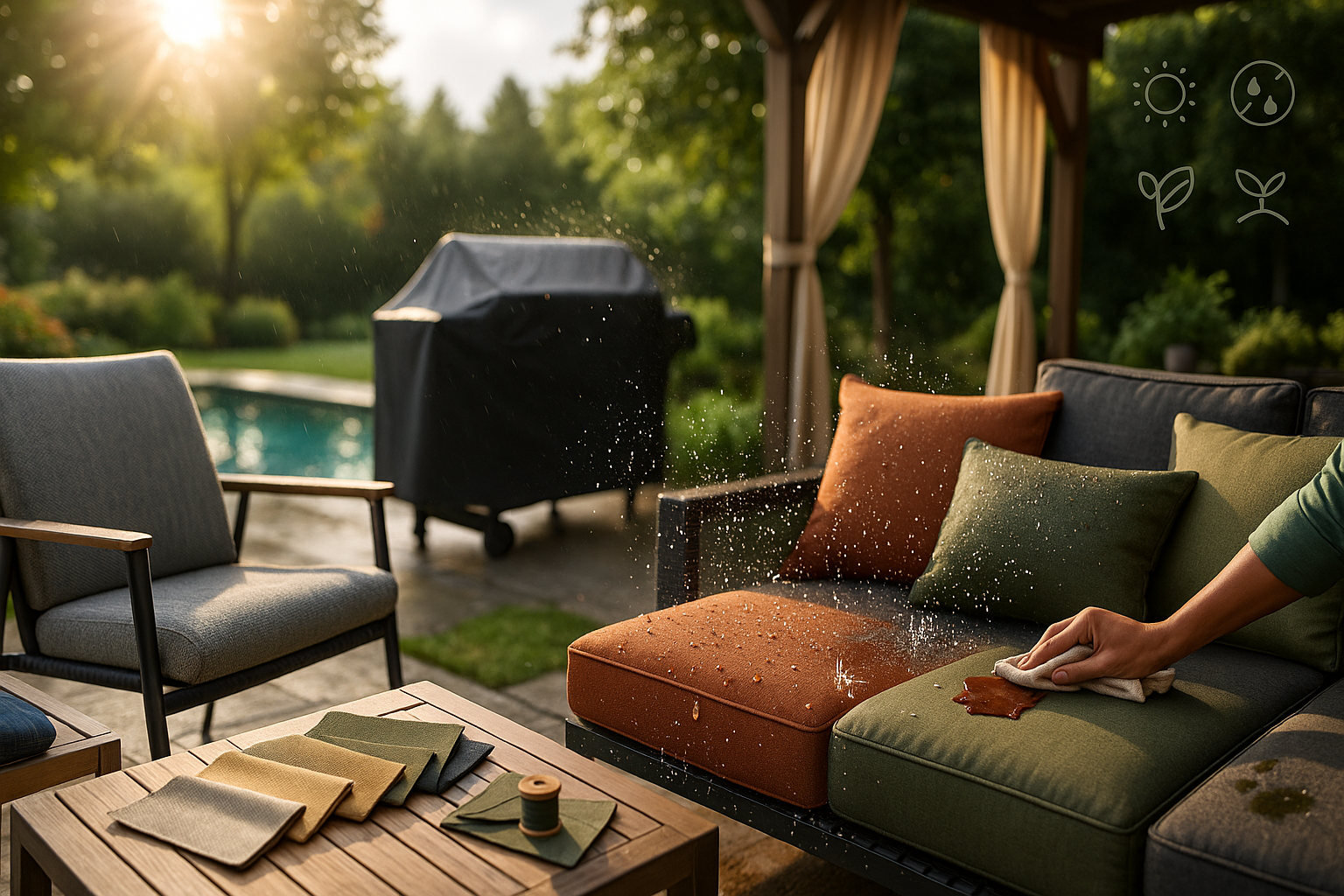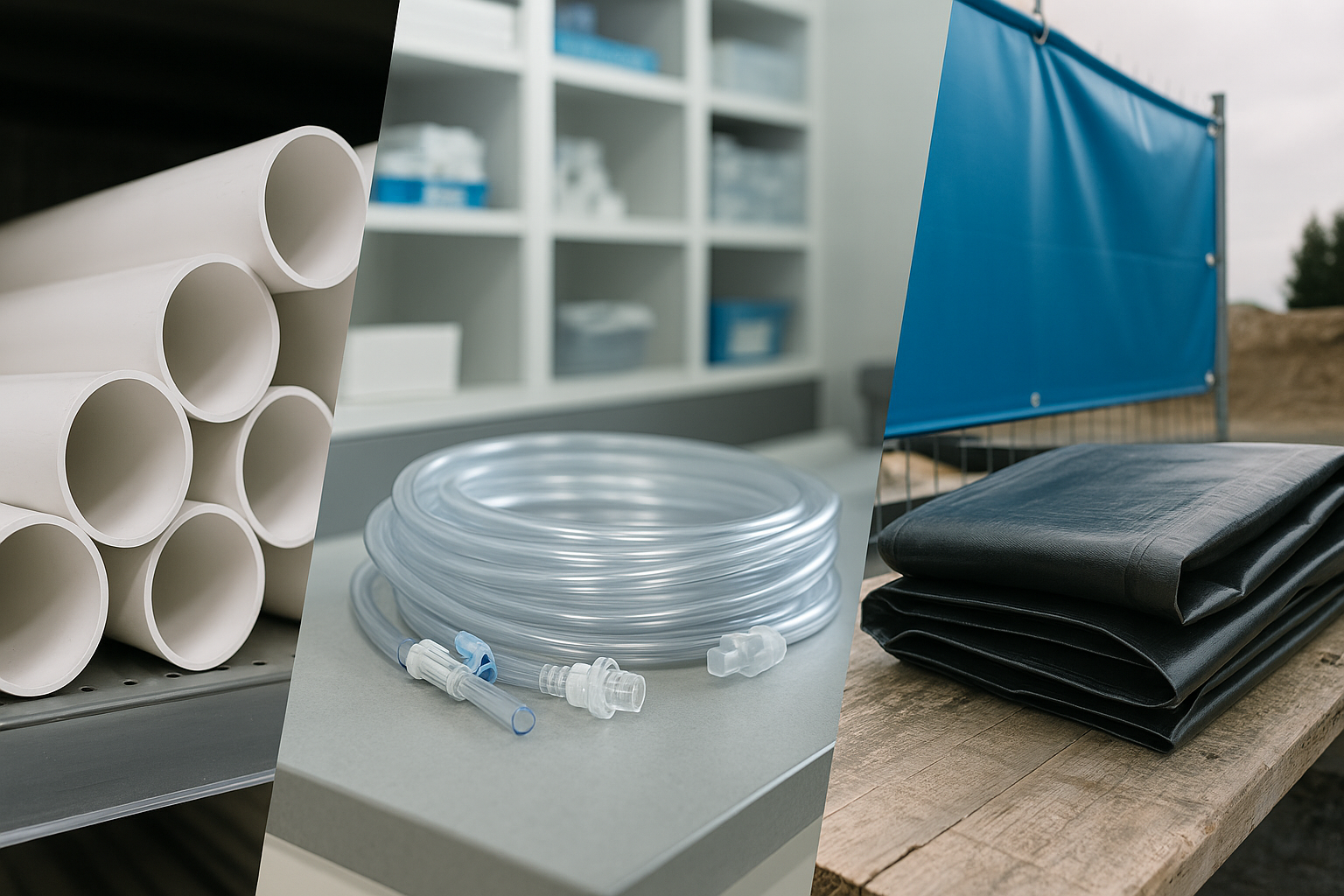
When you’re gearing up for a paint job, floor refinish, or industrial containment build-out, the humble canvas drop cloth is often the first thing you toss in the truck—right after the rollers, respirator, and iced coffee. It’s the barrier between fresh pigment and a six-figure restoration bill, the unsung hero that keeps splatter off hardwoods, concrete, and factory robotics.
Yet that same “hero” can quietly sabotage your budget, your schedule, and even the planet if you choose poorly. In other words, buying a drop cloth isn’t a casual impulse; it’s a strategic decision wrapped in cotton.
What is Canvas & How is It Made?

Canvas is a heavyweight plain-weave fabric, traditionally spun from cotton or linen fibers. High thread counts create a dense lattice, which is scoured, sized, and often bleached or pre-shrunk before being stitched into bulk yardage.
Depending on grade, raw canvas weighs anywhere from 8 to 22 ounces per square yard (oz/yd²), with #8 cotton duck weighing in at a hefty 18 oz/yd²—nearly twice the mass of lightweight synthetics drop cloths.
Heavy canvas drop cloths deliver abrasion resistance but also invite moisture accumulation. Cotton fibers absorb water like a sponge and unless there are wax additives or chemical treatments, the canvas drop cloths swell, stretch, and slowly rot. It’s why sailors once waterproofed boat sails with linseed oil—a fix that added flammability, yellowed over time, and still failed under hydrostatic load.
Modern manufacturers counter water absorption with chemical coatings—fluorocarbons, paraffin, or siliconized resins. These layers add weight, off-gas VOCs during curing, and eventually crack.
Bottom line: a water resistant canvas drop cloth is an engineering compromise, not a cure-all.
Canvas Drop Cloths Have a Few Pros, but Many Cons…7 Considerations
Canvas does deserve credit:
- It drapes tight to the floor, minimizes trip hazards, and absorbs wayward drips.
- Painters appreciate that it doesn’t skid like plastic and can be laundered—at least for a while.
- The similar porosity that keeps puddles contained also traps water, oil, and microbes.
Below are seven pressure points that determine whether your next drop cloth saves—or torpedoes—the job.
1. Mold
Cotton is cellulose, and cellulose feeds mildew. Fold a damp canvas drop cloth after a rainy exterior gig and moisture is trapped in the material—prime breeding ground for rot. Yes, you can scrub with rubbing alcohol or borax, but each cleaning cycle erodes fibers and shortens service life. Mold isn’t just cosmetic; it weakens weave integrity, tears under tension, and can transfer stains to client surfaces.
2. Weight
Hauling multiple extra-heavy canvas drop cloths up three flights of stairs feels like carrying an anchor wrapped in cloth. A single 9 × 12 ft sheet of #10 duck tips the scale near ten pounds. That load compounds over twenty drop cloths, draining crew energy and courting ergonomic claims. Polypropylene-based fabric drop cloths deliver equal toughness at roughly half the weight, freeing crews to hit deadlines instead of nursing strained backs.
3. Waterproof
Untreated cotton is anything but waterproof. Even treated variants surrender when saturation or hydrostatic pressure rises . Water wicks along warp yarns once pressure exceeds a garden-hose drizzle. You can spray wax or silicone, but coatings wear off and increase material flammability. Renegade’s polypropylene-based sheets form a naturally hydrophobic barrier—no exotic chemistry, no VOC-packed solvents.
Ditch the Dinosaur—Meet the Future of Drop Cloth Protection
Renegade fabrics crush legacy canvas drop cloths on every metric that matters: durability, weight, mold resistance, and end-of-life value. They’re free of vinyl chloride, phthalates, lead, and intentionally added PFAS; emit no measurable VOCs during hot-air welding; and are able to be recycled into high-quality polypropylene post-consumer resin.
Ready to upgrade? Visit our tarps page and let progress load faster than you can say “legacy material.”
4. Afterlife
When canvas drop cloths retire, they usually head to landfills, releasing methane as they decompose, wasting embedded energy. By contrast, Renegade tarps can be ground, pelletized, and re-extruded into new resin—closing the loop without down-cycling.
5. Cleanability
Canvas absorbs paint like a sponge. A single gallon spill bonds permanently, adding stiffness and weight. Laundering helps to remove spilled paint and accumulated dust, but a major challenge facing users is finding a washing machine to use. Using your home washing machine is possible, but may contaminate clothing or leave residues. Washing at a laundromat is also possible, but takes time and then you’ve created a headache for someone else. Drying is also an essential step after the initial wash but will accelerate fiber wear. Non-porous synthetic drop drop cloths don’t accumulate dust and any dirt or paint can be wiped clean with water or mild detergent, slashing turnaround time.
6. Durability
If maintained properly, canvas drop cloths can stay in use for years. However, they are not typically used in areas where weight is a concern, homes where customers may have allergies, or outdoor applications. If you’re looking for something as durable but lightweight and easy to clean, Renegade uses a flexible polypropylene-based compound that bends repeatedly without micro-fracture, preserving tensile strength after hundreds of deployments.
7. Slip Resistance
The paint-absorbing surface that makes canvas popular becomes a skating rink once saturated with dust or finish. Renegade manufactures a line of tarps with an integrated textured emboss on the walking side, maintaining above average traction even when wet—metrics any safety manager at a Fortune 500 Inc. subsidiary will appreciate.
| Property | Heavy Cotton Canvas Drop Cloth | Renegade Polypropylene-Based Fabric |
|---|---|---|
| Average Weight (9 × 12 ft) | ~10 lb | ~5 lb |
| Mold/Mildew Growth | High if stored damp | Virtually none |
| Waterproof Rating | Water-resistant at best | Fully waterproof to 1 m head |
| Slip resistance | Need to buy with butyl coating | Inherently anti-slip |
| Re-Use Cycles | 100+ | 100 + |
| End-of-Life | Landfill or rag | Renegade takeback program for recycling |
Your 5 Canvas Drop Cloth Questions Answered

Still weighing your options? These quick answers tackle the most common canvas drop cloth questions—so you can choose the right material without second-guessing.
- Is a canvas drop cloth ever truly waterproof? No. Even factory-treated, the weave passes water under pressure. For leak-proof performance, consider a polypropylene-based tarp barrier.
- Can I recycle an old canvas drop cloth? Generally not; mixed coatings and paint residue disqualify them. Because Renegade tarps are designed for recycling and coatings and paints can be washed off, they are accepted at many recycling facilities.
- Does a lighter plastic sheet blow around? Cheap polyethylene sheeting can, but Renegade’s heavier gauge and slip-resist texture keep it planted without tape.
- Will your tarp withstand heat guns or welding drips? Yes. Our welding temperatures are around 450 °C (842°F), which is the temperature used to adhere two edges together. The melting point for our fabric is beyond that, so any drips or unintentional heat exposure are unlikely to affect our fabrics .
- Where can I access technical data sheets? Head to our tarps page for more information about our pre-made tarps in a variety of standard sizes. We’ve even designed our website with ADA tooling, ensuring contractors with screen readers have equal access.
Choose Smarter, Work Faster, Waste Less with Renegade Tarps

A canvas drop cloth might feel like a safe default, but in 2025 “default” equals “playing small.” Technology moved on, and so should your toolkit.
Next time you browse for supplies, remember these seven checks that determine the total cost of ownership.
- weight
- mold resistance
- waterproof integrity
- cleanability
- durability
- slip resistance
- afterlife
Stack them side by side, and canvas tarp tradition folds—literally.
Ready to upgrade? Renegade stands by with polypropylene-based tarps that outlast and out-perform.
Interested in Our Fabrics?
Contact Us

